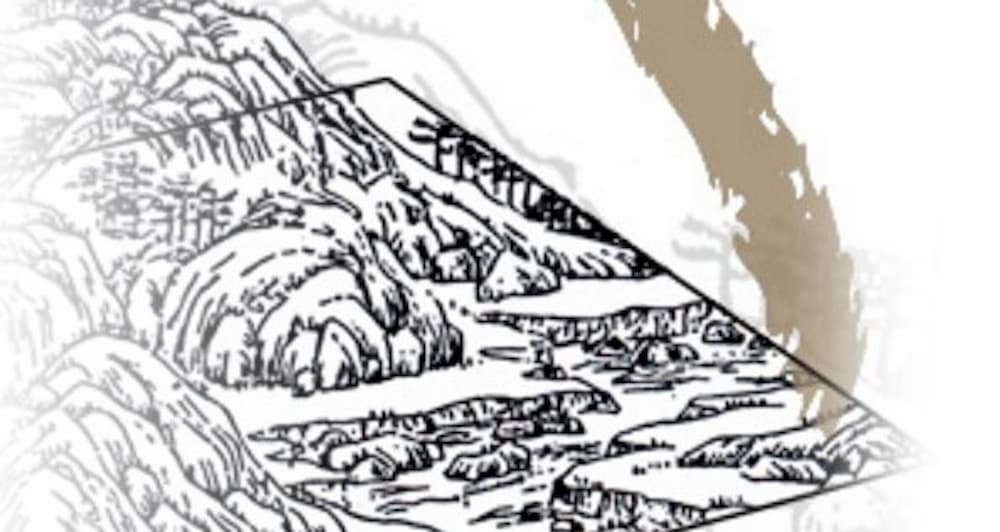
Geoscience in Ancient China
Splendid
Chi Culture
Topic
Geoscience in Ancient China
The geosciences in ancient China were not organized into as many sub-specialties as they are now. Originally, all the various branches were called by one name—dili geography; this included both natural and human geography. The term existed as early as the Spring and Autumn period (770–476 BCE) when it meant the lay of the land, such as mountains, rivers, lakes, oceans, plains, hills, etc. From the Tang dynasty (618–907) on, the word dili began appearing in the titles of feng shui texts. These texts addressed the topic of location for houses and burials; as they contained a great deal of geographical knowledge they are important to the history of the geosciences in China.
From very early on, Chinese writers treated cities as geographical phenomena. In the “Biographies of Profit Seekers” chapter of the Shi ji (Records of the historian), the Western Han historian Sima Qian (ca. 145/135–ca. 90 BCE) profiled nearly thirty cities with regard to their economy, transportation, and geography. The Shuijing zhu (Commentary to guideway to waterways) by Li Daoyuan (470–527) of the Northern Wei, the Wuchuan lu (Diary of a boating trip to Wu) by Fan Chengda (1126–1193) of the Southern Song, and the Xu Xiake youji (Travel diaries of Xu Xiake) of the late Ming dynasty (ca. mid-seventeenth century) all addressed the many aspects of cities.
Tradition says that rudimentary maps existed during the reign of King Yu of the Xia dynasty (ca. 2100–ca. 1600 BCE). Nearly a millennium later, in the Western Jin dynasty (265–316), Pei Xiu (224–271) consolidated the empirical knowledge passed down by previous generations and proposed an innovative and systematic theory of cartography. In doing so, he laid down the traditional Chinese foundations of the science.
Minerals are used in a plethora of everyday items such as clothing, food, shelter, and transportation. The early Chinese accumulated a wealth of geological knowledge such as minerals, rocks, fossils, volcanic hot springs, earthquakes, geodesy, and the changes of continents and the sea. Among China’s many outstanding geologists are Zhang Heng (78–139), Ge Hong (283–343), Tao Hongjing (456–536), Yan Zhenqing (709–785), Mei Biao (fl. ca. 800), Shen Kuo (1031–1095), Du Wan (fl. ca. early twelfth century), Kou Zongshi (fl. ca. 1111), Fan Chengda (1126–1193), Li Shizhen (1518–1593), Song Yingxing (1587–ca. 1666), and Xu Xiake (1587–1641).
A knowledge of the earth’s relief features (geomorphology) developed early. This can be seen from the many geomorphological terms that appear in the Shi jing (Classic of songs) of the Western Zhou dynasty (ca. 1100–771 BCE). By the Eastern Zhou (770–256 BCE), the term “terrain” was already in use. Each of the two books, the Sunzi and the Huainanzi, contains a chapter on it. In the former, it appears in a discussion of the relationship between terrain and military strategy; in the latter, it is in a discussion of terrains and their surroundings. The Form School of feng shui emphasized the relationship between the lay of the land and the surrounding features; because of this, they were able to collect a great deal of knowledge. At the beginning of the twentieth century, in the process of introducing and absorbing modern Western geomorphology, Chinese scholars got to create and build Chinese geomorphology.
Both Mount Changbai (Baektu) and the Wudalianchi (a group of five interconnected lakes in Heilongjiang province) were the result of volcanic processes. There are three classes of structural landforms. Global structural landforms refer to the continents and the sea floor. Continental landforms refer to such geomorphological features as fold mountains, large, jutting plateaus, as well as ridges, mountains and plains under the sea. Geological landforms are those created by folding tectonic fracture, and volcanic eruptions. Although, knowledge of global landforms in ancient China was scarce, knowledge of the two other classes was quite extensive.
Flowing water can cause erosion, but it can also transfer sediment which is later deposited. These two actions are known as fluvial processes and can create different types of landforms. Examples of erosion created landforms are the three great and small gorges of the Yangtze River, the Three Gate Gorges and the Bronze Gorges of the Yellow River. The various deltas of the Yellow River, Yangtze River, Pearl River, and many others are examples of landforms created by sediment deposits. Coastal landforms result from erosion, the transfer and the deposition of sediment caused by the waves and tides of the sea and the biological effects of the coral reefs.
Horqin in Mongolia and the Tarim Basin in Xinjiang each contain large areas of desert, created by wind erosion. Erosion, particle transport, and deposition caused by the wind are known collectively as aeolian processes. Thus, in ancient China deserts were often called liusha or “flowing sands.” Glacial processes in China refer to the abrasion and deposition caused by moving ice. In ancient China, mountains higher than the snow line were covered year-round in snow while those covered by glaciers were called lingshan (iced-over mountains).



